2 June
lecture series
AROUND CULTURAL HERITAGE IN THE BALLE OF BAZTAN
Golden scenographies for a A sculpture: the altarpieces of Baztania
D. Ricardo Fernández Gracia
Chair de Patrimonio y Arte Navarro
Like many other churches in Navarre and Spain, the churches of Baztan dressed up with altarpieces in a special way in the 18th century, coinciding with what Caro Baroja called decades ago La hora navarra del XVIII, in which he accurately describes what happened in that particular historical context as follows: "Relatives, relatives, business, business. Finances, canonries, distinguished careers in the army. Everything goes together".
The internship totality of the altarpieces preserved in the valley belong to the 18th century and were made of wood, generally pine, a particularly ductile material for carving and, above all, susceptible to receiving a layer of gold that turned them into a veritable ember of light. With the colouring and gilding - an operation in which high-carat gold leaf was used - the altarpiece, illuminated by candlelight, glowed like an ember in the interior of the temples, insinuating itself into the public eye like a celestial apparition.
Moreover, with the vibration of their forms, the density of their decoration and the multiplicity of their polychrome images, they gave the interiors of the period, almost always with rigid, inert walls cut at right angles, a sensation of mobility and expansion of space that was structurally lacking. The altarpieces thus created an illusionism that was very characteristic of the Baroque, in which the dichotomy between background and figure, between surface and reality, was only deceptively resolved.
In addition to their more or less dynamic Structures , their theatricality and colour, the altarpieces were conceived as thrones for the images of devotions deeply rooted in the people, as well as those of the new saints who represented no more and no less than the response of the Church of the Catholic Reformation to new needs that were proclaimed in the role of works or prayer, without lacking the patron saints of Navarre, or the saints linked to the particular devotion of their promoters and local traditions.
The arrival of academic art was evident in Baztan before the rest of Navarre, where the construction of the cathedral façade in Pamplona was a benchmark. The construction of the altarpiece of the parish church of Irurita is a notable exception due to its decidedly classicist lines at a date such as 1770, when Rococo art prevailed in almost all the workshops.
A pair of altarpieces belonging to the decorative Castilian period
The main altarpieces in the parishes of Arizcun and Ciga belong to the Baroque decorative phase. The first of these was commissioned in 1693 by the master sculptor and architect Juan de Oyerena, who lived in Elizondo, and was valued in 1699 by Martín de Legarra from Pamplona. Its structure is made up of two sections with several niches and a semicircular attic articulated by salomónicas and with abundant decoration, not by a great carver but by a specialised carpenter. Shortly after, before 1703, the piece was completed with six sculptures of Saint Fermín, Saint Francis Xavier, Saint Stephen, Saint Lawrence, Saint John and Mary, discreet works by the Villava sculptor Miguel Sagüés, some of which have been preserved. The history of the altarpiece continued with important decorative, gilding and sculptural additions. Between 1735 and 1741 decorative motifs were introduced, a tabernacle with its canopy, works that were at position by José Pérez de Eulate. At the same time, busts of the Dolorosa and Christ were placed, which today are kept in the parish sacristy. The accounts of 1742 include the items corresponding to the payment for the gilding carried out by the Madrid-born Pablo de Castro, who worked at that time in the convent of the Poor Clares of Arizcun. Finally, around 1756-1757, the A image of the Virgin of the Rosary arrived, a gift from Don Francisco Miguel de Goyeneche y Balanza, Count of Saceda and steward to Isabella de Farnesio. The new niche for the sculpture was made by José Coral, from Pamplona.
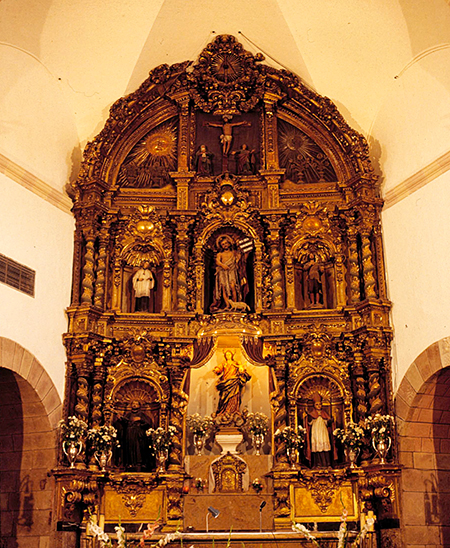
Photo 1. Parish church of Arizcun. Main altarpiece
The main altarpiece of Ciga comes from the parish church of San Nicolás in Pamplona. It was made by Fermín de Larrainzar in 1708 and 1715 and was moved from the capital of Navarre around 1905. data One of the most important features of the piece is the incorporation of the new subject of salomonic columns, possibly influenced by the Aragonese artist Pedro Onofre Coll, who came to work on the tabernacle of San Fermín in 1714, incorporating salomonic columns "dressed with flowers", as stated in the conditions for making the altarpiece of the Virgin of Jerusalem in Artajona.
Following court customs in the middle decades of the 18th century
The altarpiece of the Poor Clares of Arizcun, paid for by the Iturralde family, Marquises of Murillo, was made by José Pérez de Eulate between 1736 and 1738. It was gilded by the Madrid painter Pablo Antonio de Castro, who finished his work in 1742. It is a shell altarpiece related to the Madrid school, both for its architectural concept with monumental and clear lines, and for some of its decorative motifs. At final, an altarpiece of subject cascarón, unornamented, very architectural, which breaks with traditional schemes at an early stage.
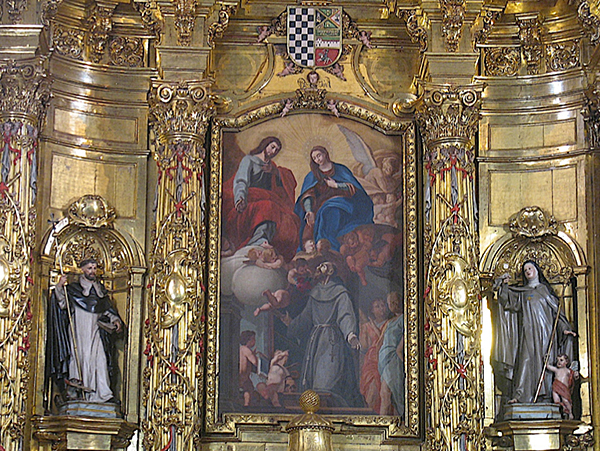
Photo 2. Convent of the Poor Clares of Arizcun. Main altarpiece
In 1762 Silvestre Soria, the great master of the Rococo period, trained in the workshop of the royal or new palace in Madrid with Juan Domingo Olivieri, signed a contract to make the main altarpiece for the parish church of Elizondo. The promoter of the work in this case was a man from Baztan, Ambrosio Agustín de Garro, knight of the Order of Santiago, who was established at the court of Madrid as treasurer to the Infante Don Luis Antonio Jaime. Before signing the notarial deed of commitment, the promoter obtained the corresponding permission from the local council and its vicar, and commissioned a design and conditioned to the prestigious Silvestre de Soria, a master sculptor based in Pamplona. He undertook to make the altarpiece using his own designs, with minor modifications that were carefully noted in the agreement. These included making the first section a little smaller to give more space to the second; giving greater relief to the mouldings and trophy of the main arch; slightly reducing the size of the sculptures of St. Peter and St. Paul; download ornamenting the flying buttresses behind the figures, also eliminating the trophies of war and removing the decoration from the tabernacle to give the impression of greater grandeur. It would be Soria's duty to commission the sculpture and to gild and marbleise the entire altarpiece, "providing that it should have a little more gold than the altarpieces in the church of Azpilcueta". Pine wood was once again chosen as the material for the whole ensemble, the price was agreed at 2,360 pesos of 128 quarters, to be paid as the work progressed, and deadline was set for St. John's Day 1763.
The deed of submission for the work is dated a few days after the date set for the completion of the altarpiece, specifically on 2 July 1763. It states that Silvestre de Soria had been paid the agreed sums for the piece with its sculpture, gilding and marbling, plus 150 pesos for improvements for having given the altarpiece greater extension or proportions. The remains of this altarpiece are preserved at Shrine of Our Lady of Fair Love de San Pedro de Elizondo.
Shortly after finishing Elizondo's work, Soria took over position for Azpilcueta's main altarpiece and side altarpieces, with a beautiful rococo design and great architectural power at design. The altarpieces include sculptures by Luis Salvador Carmona made in 1752 under the patronage of the bishop of Michoacán, Martín de Elizacoechea. In a letter from Antonio Gastón to the aforementioned bishop dated 5 December 1752 he writes to him: "After having been in Madrid for six to seven months, I returned home and in May of this year, having spent the winter and spring in that Court in the company of my brother and children, beautifully and very distracted by the bustle of so many people and news that happens every day in the Court, without having experienced the slightest change in my health, I had at the same time the pleasure and pleasure and the pleasure of being in the company of the bishop of Michoacán, Don Martín Elizacoechea, At the same time I had the pleasure and pleasure of seeing how the saints were working for the church of Azpilcueta under the direction of my brother, whom I assure Your Illustriousness are very good and, according to the intelligent, are highly appreciated and are waiting to come, which, apart from the fact that in the Kingdom there will be few similar ones, since today the best work is being done in Madrid".
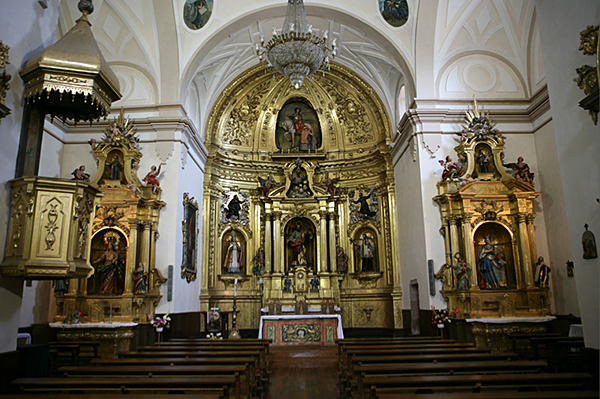
Photo 3. Parish church of Azpilcueta. High altarpiece and collaterals
The main altarpiece in Lecároz is also the work of Silvestre de Soria and the most original in its typology. The patrons, in this case, were the Jáuregui and Aldecoa family of the palace of the Ohárriz armoury corporal. In this case, three sons of the house achieved fame, one with the military degree program , Don Agustín, viceroy of Peru, Don Pedro Fermín, canon and archdeacon of the Chamber of Pamplona Cathedral, and the third, Francisco Martín, with a successful degree program in business. The latter two were outstanding in artistic promotion. Don Pedro Fermín, in addition to having financed the decoration of the large Rococo sacristy of Pamplona Cathedral, donated several reliquaries, ornaments and sculptures by Luis Salvador Carmona to the parish church of Lecároz, paying for the collateral altarpieces, the work of Silvestre de Soria, together with his brother Francisco Martín. The latter, after having paid for sculptures by the same master in the Royal Congregation of San Fermín de los Navarros in Madrid, offered carvings of Saint Bartholomew and Saint Matthias to the same parish where he was baptised.
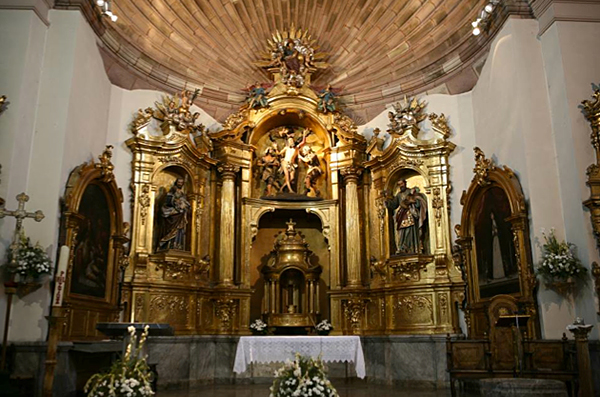
Photo 4. Parish church of Lecároz. High altarpiece
The main altarpiece of Irurita, with project by José Hermosilla
Martín González and Maria Teresa Cruz Yábar documented José Hermosilla's design for this altarpiece in 1770. Thus, on 7 June 1770, Don José Ignacio de Goyeneche, whose mother lived in Irurita, wrote to Don Vicente Pignateli of the Royal Academy, informing him that in Irurita, in the Baztán valley, Kingdom of Navarre, an altarpiece "of very considerable cost" was to be made for the parish church. For this purpose, Juan José de Echarri had drawn up a design , which was submitted and rejected. The final altarpiece turned out to be an unusual piece in comparison to what was being built in Navarre at the time, due to its classicism and ornamental purity.
The author of the design, José Hermosilla (†1776) was one of the most important master builders of the reign of Charles III, along with Francisco Sabatini and Ventura Rodríguez, firstly working as captain of the king's engineers at position and culminating his degree program as director of the Royal Academy of Fine Arts of San Fernando. Of all his work, the remodelling and ornamentation of the Paseo del Prado (1767-1784), considered the most important work of the reign of Charles III, although it was completed by Ventura Rodríguez, is particularly noteworthy.
Alfonso Bergaz was in charge of a large part of the sculpture, who stated in a memorial at the end of the 18th century: "For the Villa de Yrurita Reyno de Navarra two statues, the Patriarch Saint Joseph and Saint Francis Xavier, life-size; also five medals, one of the birth of the Son of God, idem the Baptism of Christ, Saint Eutropius Bishop, Saint John baptising Christ, Saint Luke and Saint John the Evangelists". Reliefs and bulks show a certain coldness if we compare them with the sculptures of Carmona de Azpilcueta or Lecároz.
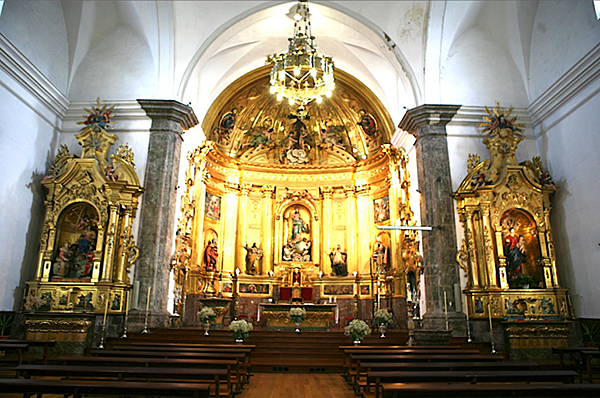
Photo 5. Parish church of Irurita. High altarpiece and collaterals
The cold, calculated and numerical aesthetics of the altarpiece must not have been very pleasing, as the side wings of the altarpiece, which were built immediately, returned to the lively and lively designs of Rococo art, as happened in the side altarpieces of the Virgen del Rosario and San Joaquín in the same parish. The latter was contracted in January 1776 with Pedro José Irisarri, a master architect resident in Yanci "of all expertise" for the sum of 380 pesos. The gilding of the same was contracted by the parish's President Don Juan Pedro Michelena with the master resident in Ciga Agustín de Lapedrosa in November 1776 for 250 pesos and on the condition that it be similar in all respects to that of the Rosary. The image of the Rosary, a work signed by Juan Domingo Olivieri (1749) had been paid for by the brothers José Ignacio, Tomás and Pedro Francisco Goyeneche to satisfy the devotion of their mother, who had come to live her last years with her daughter, who was married in the Jauregia palace in the town.
Echoes of academic art from the hand of a French master
Two altarpieces were immediately influenced by Irurita's classical model , in the towns of Elizondo and Arráyoz. Between 1775 and 1777, a new main altarpiece was made for the parish church of Elizondo to replace the one from 1762, under the patronage of the same family. It was commissioned by Ambrosio Agustín de Garro's will and entrusted to his son and executor Nicolás Ambrosio de Garro, both of whom were treasurers of the Infante Don Luis Antonio. The will of the aforementioned Ambrosio Agustín included the sum of 52,000 reales de vellón for the "renovation of the main altarpiece of Elizondo". With this sum, José Poudez, an architect and sculptor from Pau, contracted the new altarpiece, moving the one that had been paid for by Ambrosio Agustín to the chapel of San Antón. Poudez, a French master who would work on several projects in the valley and in the collegiate church of Roncesvalles, charged different amounts for the altarpiece between 1775 and 1777. The polychromy of the ensemble was subcontracted by Poudez to the Pamplona gilder Juan Francisco Santesteban in June 1776, when it had already been completed, it being stated that the gold was to be of the best from Pamplona or Paris. The sculptures on the altarpiece are, in addition to Santiago on horseback with the Moors at the bottom, those of the saints Ambrosio, Agustín, Nicolás and Fermín. A photograph of the altarpiece is preserved, which sample shows its classicist lines and disappeared a century ago when the new parish church was built.
The direction towards severe neoclassicism is even more evident in the main altarpiece of Arráyoz, made by José Poudez from 1778 and valued by José Muguiro in April 1785.

Photo 6. Parish church of Arráyoz. High altarpiece
